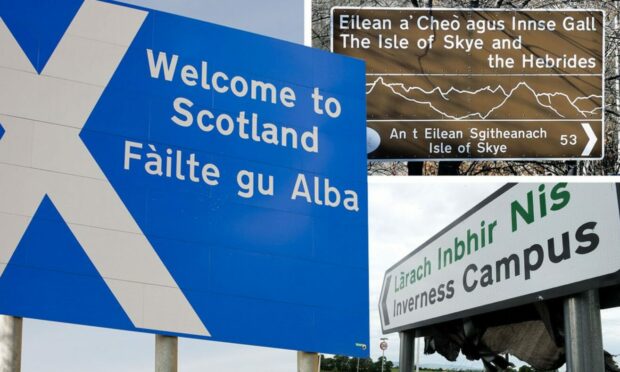If you are a Gaelic tourist or native speaker, a culture centre in Stornoway is offering you a discount on drinks if you order in Gaelic.
That is one of a good many benefits of Gaelic language and culture to the Scottish economy and tourism, say VisitScotland.
As people around the world celebrate Seachdain na Gàidhlig, World Gaelic Week, VisitScotland is highlighting the importance of the national language to Scotland’s tourism and events industry.
In the past year, the national tourism organisation has seen a significant increase in interest in Gaelic on its website.
The number of users visiting Gaelic-related content rose by 151% in 2022 compared to 2021, plus there was more than 660,000 views of its Scottish Gaelic Explained video on YouTube.
The increasing popularity of the language among visitors creates new opportunities for tourism and events businesses across Scotland to incorporate Gaelic, helping create authentic and immersive experiences visitors crave.
Gaelic toolkit
To support businesses and encourage those already embracing Gaelic to share their story, VisitScotland has created a Gaelic toolkit with support from national Gaelic development body Bòrd na Gàidhlig.
It features resources, real life business examples and practical suggestions for incorporating the language from teaching staff basic phrases to translating local place names to reveal their Gaelic meanings and using Gaelic in marketing materials.
Lyn Donnelly, VisitScotland senior responsible tourism manager, said: “Gaelic is such a unique and special part of our culture, and this week is a timely reminder for all of us about the need to protect and preserve Scotland’s cultural heritage for future generations.
“The increasing popularity of Gaelic presents an exciting opportunity for the tourism and events businesses across Scotland to incorporate Gaelic in their offering, creating authentic and immersive experiences we know visitors are looking for and strengthens our appeal as a destination.”
An Taigh Ceilidh – Stornoway
An Taigh Cèilidh is a new Gaelic community and culture centre in popular visitor spot, Stornoway on the Isle of Lewis, where visitors get a drinks discount if they try ordering in Gaelic.
Magaidh Nic a’ Ghobhainn and Teàrlach Wilson opened the venture after finding that there was a demand for a dedicated Gaelic language and culture space in the Gaelic heartland.
For the An Taigh Cèilidh team, Gaelic is proving to be a draw for visitors and a boost to their holiday experience.
Mr Wilson said: “People visiting Scotland want to see what’s special about Gaelic. They are interested in the culture, history, and community.
“Gaelic is an essential and enduring component of Scotland. The language that gives us so many of its place names, and the culture that gives us so many things that we think of as distinctly Scottish like our music, shortbread, and tweed.”
The project has had a hugely positive reaction from locals and visitors alike.
Joy Dunlop, director of Seachdain na Gàidhlig, said: “The importance of Gaelic both here in Scotland and abroad is clear, with there being a tangible increase in both interest in and understanding of our nature language and culture.
“This is none more obvious than in the tourism and events sector, with Gaelic being an inspiration for people visiting our beautiful country. Tourism drives the Scottish economy and Gaelic is at the heart of this for many.
“The second ever Seachdain na Gàidhlig is looking bigger and better than we’d imagined, with over 100 events taking place across the globe; most of which wouldn’t have been possible without the extra funding allocated to us by Bòrd na Gàidhlig. Do check out www.seachdainnagaidhlig.scot to see how you can get involved – it’s not too late!”



Conversation